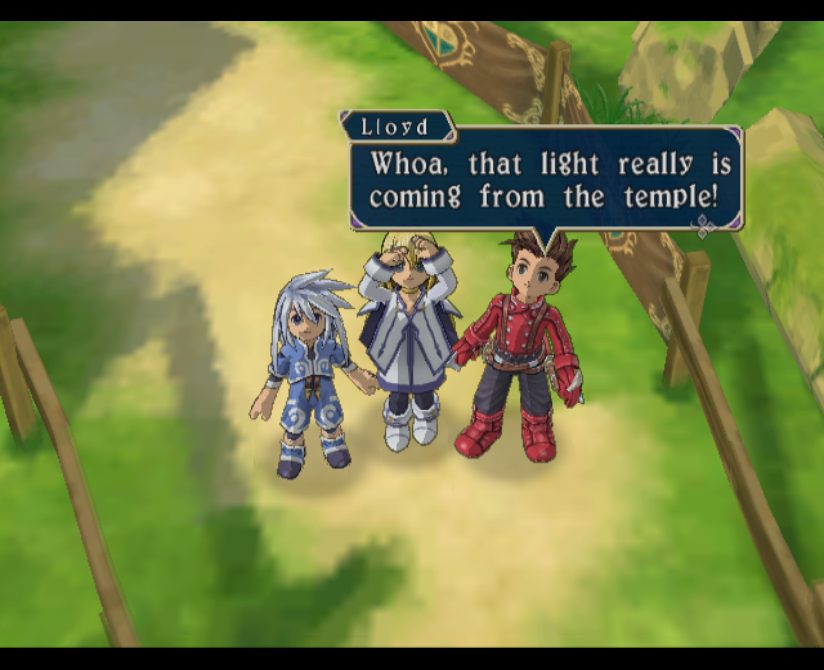


In order to increase the odds of a successful recruitment, the element of the field should align with the element of the monster, and an altered version of the classic Tales affection system helps to persuade them to join the party. Monsters can be recruited once they have been defeated in battle while the elemental grid has four of the same element, as well as the main element matching them. Īnother new feature is the ability to capture, evolve, and level up over 200 monsters to fight alongside Emil.
#Tales of symphonia dawn of the new world iso ntsc series
Another returning element of the series are Mystic Artes. A meter on the lower part of the screen indicates when the attack can be unleashed. Changing the element of the field determines both the effectiveness of an attack, as well as the characters that can participate in Unison Attacks, which return from the original Symphonia. The battlefield's element can be altered by using three skills with the same elemental attribute.

Each battle location, skill, and monster has an elemental attribute. A key feature of this enhanced system is the Elemental Grid. Tales of Symphonia: Dawn of the New World uses the 'Flex Range Element Enhanced Linear Motion Battle System' (FR:EE-LiMBS), combining aspects of Tales of the Abyss' and Tales of Destiny's battle systems, to create a battle experience comparable to Tales of Innocence's Dimension Stride Linear Motion Battle System. Tales of Symphonia: Dawn of the New World and the original Tales of Symphonia were re-released together as a PlayStation 3HD remaster under the title Tales of Symphonia Chronicles in October 2013 in Japan and February 2014 in North America and Europe. The game was released in Japan on June 26, 2008, in North America on November 11, 2008, and in Europe on November 13, 2009. Tales of Symphonia: Dawn of the New World is a role-playing video game developed by Namco Tales Studio and published by Namco Bandai for the Wii as a cross of spin-off and sequel to Tales of Symphonia for the Nintendo GameCube and PlayStation 2.


 0 kommentar(er)
0 kommentar(er)
